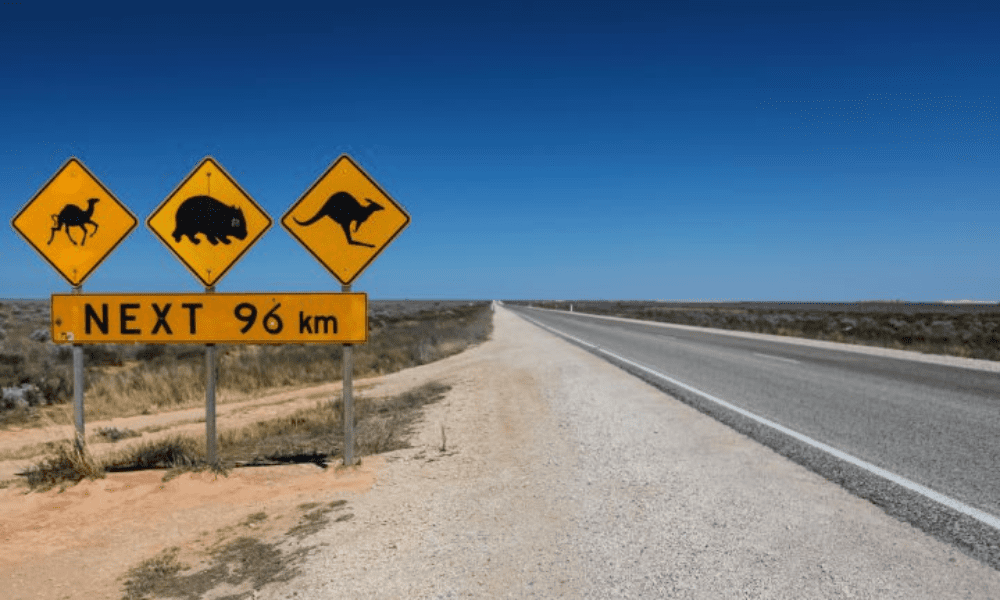AAMI urges drivers to stay alert as wildlife collisions surge

AAMI urges drivers to stay alert as wildlife collisions surge | Insurance Business Australia
Motor & Fleet
AAMI urges drivers to stay alert as wildlife collisions surge
Expert outlines factors contributing to rise in collisions
Motor & Fleet
By
Roxanne Libatique
New data from Suncorp Group’s (Suncorp) AAMI has shown that more than 40% of Australian drivers ignore wildlife warning signs, with 60% reacting to potential animal collisions by swerving or braking abruptly, posing a threat to themselves and others.
The survey also indicated that 10% of Australians are uncertain about what to do if they hit an animal, and over half (54%) have experienced an animal collision.
New South Wales (NSW) has the highest number of animal collisions (30%), followed by Victoria (29%) and Queensland (24%).
Dubbo in NSW, is the top location for animal collisions, followed by Sunbury in Victoria, and Goulburn in NSW.
Rural and regional roads account for 36% of these collisions.
Nearly 60% of collisions occur from May to October.
Dusk, specifically between 4:30 and 8:00, is the most common time for collisions, comprising 25% of accidents.
Saturday sees the most wildlife-related accidents, with 31% occurring over the weekend.
Male drivers aged 45 to 54 and 55 to 64 are the most likely to be involved in animal collisions.
The latest figures coincide with RACQ’s recent report, which revealed a 25% increase in motor insurance claims linked to animal collisions in the past year.
Animal collision data by Australian state

Importance of following wildlife warning road signs
AAMI motor claims manager Leah James highlighted the importance of following wildlife signs for road safety, especially during high-risk periods.
“Our claims data consistently tells us dawn and dusk are the most dangerous times for animal collisions,” she said. “During winter, days are shorter and many of us are on the road when there’s low light in the early mornings and late afternoons. This coincides with when nocturnal mammals are most active, so drivers need to be more vigilant, and on the lookout for wildlife.”
She also noted that while wildlife signs might not entirely prevent collisions, they can help drivers avoid sudden swerves. AAMI’s research revealed that about 28% of Australians would continue driving even if it meant hitting an animal, risking their safety and others.
“What people might not know is that it can be more dangerous to swerve to avoid hitting an animal than to keep driving. Swerving can mean losing control of your car, and increase the chances of colliding with a tree, pole, or another vehicle, injuring yourself, passengers, and potentially other drivers,” she said.
Factors contributing to rising animal collisions in Australia
In 2023, WIRES (Wildlife Information, Rescue, and Education Service) received over 180,000 rescue calls, aiding more than 130,000 native animals, many involved in vehicle collisions.
Kristie Newton from WIRES pointed out that habitat loss and extreme weather significantly contribute to the increase in animal collisions.
“As habitat loss and extreme weather continues across Australia, our native animals are being displaced from their natural homes and forced into urban areas in search of food and shelter,” she said. “Last year, the number one animal crash hotspot, Dubbo, lost 351 hectares of tree cover.
“Sadly, because of the increase of habitat loss and extreme weather, our wildlife are becoming more vulnerable to traffic, and collisions with vehicles are on the rise.”
How can drivers protect themselves and wildlife?
Newton recommended several steps drivers can take to protect themselves and wildlife:
Pay attention to wildlife signs indicating areas with high wildlife activity.
Be vigilant during high-risk times.
Carry a rescue kit in the car, including a cardboard box, towel, and gloves.
Safely stop and check pouches, as marsupial joeys often survive in their mother’s pouch after a collision.
NRMA executive manager Natalie Major emphasised the importance of caution among drivers, particularly during times of increased travel. She advises drivers to take adequate rest before travelling, take regular breaks to maintain alertness, and be cautious during early morning and late evening.
“How a driver reacts can help protect our wildlife, minimise damage to your vehicle, and potentially even prevent injuries and save lives, so it’s important to be alert. Ensure you are well-rested before setting off on a long drive and take regular breaks,” she said. “If you see an animal on the road while driving, try to slow down and don’t swerve to avoid it, as you run the risk of colliding with another car or running off the road.”
Worst month, date, and time for animal collisions

Related Stories
Keep up with the latest news and events
Join our mailing list, it’s free!






